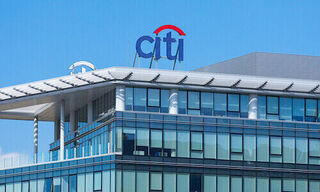According to a report from global real estate services company Colliers International, total retail sales in Hong Kong dropped by 1.6% for the first half of 2015, compared with the same period in 2014. Meanwhile, the sales of luxury gifts, jewellery and watches tumbled 15.9%.
Hit by the structural changes in mainland-consumer behavior and the recent Yuan devaluation which further affects spending by mainland tourists, Hong Kong’s retail sales continues to face headwinds. While mainland visitors account for about one-third of Hong Kong’s total retail sales, over dependence on the mainland China market has caused Hong Kong retailers much pain in recent months as the spending slowed.
Pressured by the falling sales figures, the street-level retail rents in traditional shopping districts such as Central, Causeway Bay, Tsim Sha Tsui and Mong Kok, have declined to mid-2011 levels, or by 10.5% in the first half of 2015. Colliers predicts a further 15% decline in 2015, after a full year decline of 5.5% in 2014.
Speaking at a press conference last week, Senior Manager of Research Hong Kong, Colliers International, Joanne Lee said, “If a further significant devaluation of the Yuan occurs, a more pronounced negative impact will be felt. This could further dampen Hong Kong retail sales as mainland visitors expenditure accounted for a significant proportion of overall sales - they contributed 38% of the city’s total retail sales in 2014. A weaker Yuan means mainland tourists will be faced with a more expensive Hong Kong dollar, which could dent retail sales even further. This may inadvertently force HK landlords to reduce rents."
Recent sky-rocketing rents of street level stores have caused these rents to be susceptible to a downturn. Owners of storefront shop spaces are cutting rents to retain tenants as some of the big name tenants are threatening to leave upon their lease expiration.
“The market is going through a period of uncertainty and moving in various directions. On the brighter side, the softening retail leasing market is encouraging the gradual return of mass-market retailers and mid-range brands to prime shopping districts for a healthier tenant mix. That said, we are still seeing some luxury brands staking claim on landmark shops in prime streets. It is too soon to reach a verdict, much remains to be seen,” Helen Mak, senior director, Retail Services explains.
Mainland retail stores are gradually moving beyond the bricks-and-mortar store concept. In Hong Kong's neighbouring city of Shenzhen, online sales have been supplementing the performance of physical stores.
“The retail sector is evolving,” Simon Lo, Executive Director of Asia Research and Advisory says. “Looking at the bigger picture, the e-commerce and online shopping boom are bringing challenges and opportunities to the retail market. The online-to-offline (O2O) platform widens the retail market dimensions and allows a further and deeper global reach of products.”
“E-commerce will not completely replace the physical stores. It provides an alternative shopping channel for consumers but people will still prefer to go to stores for the experience,” Linda Lin, director of Shenzhen Retail Services elaborates. “The food and beverage business in Shenzhen is growing at a quick pace in the last two years thanks to the popularity of the internet. Consumers can now place order, settle payment and share their experience and reviews using online platforms. A lot of restaurants are now exploring different social media platforms to enhance the whole dining experience.”
“With globalisation and advances in technology, many driving forces are destined to reshape the global marketplace. In order to compete, retailers need a new dimension of thinking around innovation and technology to ensure that opportunities created by the rise of e-commerce are fully captured,” Lo added.




















